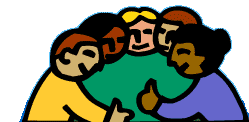Scoliosis (curve of the spine) is rare in young children
but when it does occur, it can be associated with other deformities, especially the heart, kidneys or spinal cord. There may be no other symptoms except for the scoliosis or there may be lots of other medical problems
that preceded finding out that your child also has scoliosis.
When everything except for the curved back looks normal (including
the vertebrae bones that make up the spine), it is called “idiopathic”.
This means there is no known underlying explanation for why the curve happened in your child. If this scoliosis is
diagnosed before 3 years old it is called “infantile idiopathic scoliosis”, between 3 and 9 years old it is called
“juvenile idiopathic scoliosis”
When everything doesn’t look normal, for example,
the vertebrae bones on an X-ray look malformed or ribs are fused together or even missing, this is called “congenital
scoliosis” and the doctor will want to do more tests to look at other parts of the body that may have been malformed
in the womb at the same time. (The spine, heart and kidneys are all formed very
early in the first 8 weeks of pregnancy, probably before you even knew you were pregnant).
Sometimes in a young child with multiple medical problems,
the scoliosis is just a part of the overall diagnosis or syndrome. Some of these diagnoses and syndromes are listed below
with links to learn more about them.
Of course, you should never use this information to diagnose
your child’s medical problems. Talk to your doctor and ask questions.
VATER (VACTERL) – www.vaterconnection.org
NEUROFIBROMATOSIS – www.nfinc.org/nfbody1.html
MARFAN’S SYNDROME – www.yourgenesyourhealth.org/marfan or
www.marfan.org (on the menu at the left, click
“about Marfan syndrome”, click on “characteristics” in the
dropdown box, click on “orthopedic concerns” (in
blue) at the end of the paragraph labeled “skeleton”
OSTEOGENESIS IMPERFECTA –www.oif.org
GOLDENHAR SYNDROME – www.rarediseases.org (on the menu at the left, click
on “rare diseases database”, then in the empty search box at the top of the page type in “goldenhar”,
then click on “Goldenhar Syndrome (oculo auriculo vertebral spectrum)”.
JARCHO-LEVIN SYNDROME – www.raredisease.org (on the menu at the left, click
on “rare diseases database”, then in the empty search box at the top of the page type in “jarcho-levin”,
then click on “Jarcho-Levin”
KLIPPEL-FEIL – www.raredisease.org (on the menu at the left, click
on “rare diseases database”, then in the empty search box at the top of the page type in “klippel-feil”,
then click on “klippel-feil”
Thanks to Janet Cerrone, PA-C, who works with Dr. Betz for
her contribution of this page to our website!

